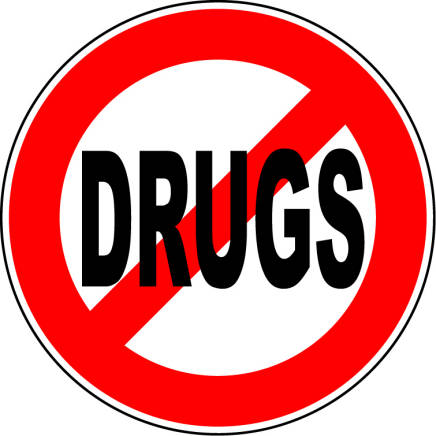Questions and Answers
In which group of substances does ecstasy belong?
Ecstasy is classified as hallucinogenic amphetamine and is known chemically as 3,4 methylenedioxy-methylamphetamine or MDMA.
When was MDMA first manufactured and for what reasons?
MDMA was first prepared by two German pharmacists around 1913 as part of a general research program. It was then tested in animals during an adrenaline search, in 1941 it was tested to relieve patients with Parkinson's disease and was rejected because of a severe stiffness of one of the patients, and finally in the 1950s both MDMA and other drugs of this group from the US Army, without success, in search of "truth serum" for enemy agents during the Cold War (Shapiro, 2009).
Who is the real architect of the modern phenomenon of MDMA and when was the substance finally released?
 The real architect was the scientist Dr. Alexander Soultzin, the substance was released in the 1970s and was called "hug drug" until a federal ban was imposed in 1985 (Shapiro, 2009).
The real architect was the scientist Dr. Alexander Soultzin, the substance was released in the 1970s and was called "hug drug" until a federal ban was imposed in 1985 (Shapiro, 2009).
How did Ecstasy spread?
It was disseminated in the US through the renegade movement that passed from Great Britain and Europe. However, the essence has escaped from the international stage of the clubs and has become part of the lifestyle of so many younger and older people who had the experience of using Ecstasy when they were young.
Ecstasy, according to official statistics, comes second after marijuana in illicit drugs in the US (Shapiro, 2009).
What kind of perceptual changes are caused by MDMA?
MDMA causes changes in the perception of time and space, and brings feelings of serenity. Users are able to understand that the hallucinations caused by Ecstasy are not real and usually do not suffer from temporary psychosis in which sensations/impressions are perceived as an objective reality (Miller, 2002).
How MDMA is used?
MDMA can either have the form of a pill or a capsule that is swallowed either in the form of a powder that can be inhaled or smoked in a cigarette, or can be swallowed after licking it or dissolving it in a drink.
Ecstasy is available in a wide range of colors and designs, and as there is no quality control - as with all illicit drugs - it may include substances like caffeine, ephedrine, ketamine or other related substances such as MDA or MDEA (Shapiro, 2009).
Does ecstasy cause dependence?
Ecstasy does not cause physical dependence or withdrawal symptoms of heroin type, but can also cause psychological dependence. There is also tolerance in its effect, which leads the user to increase the dose to achieve the desired effect or to alleviate unpleasant symptoms such as fatigue, anxiety and depression - a consequence of the systematic use of the substance (Shapiro, 2009).
What are the effects of a single dose?
The effects of a single dose of Ecstasy begin to appear after 20-60 minutes and can last several hours. The experiences caused by the substance often depend on the user's disposal before use, on his expectations and on whether the immediate environment is friendly or not.
In moderate doses of Ecstasies the following effects have been reported:
- mild "excitement" of euphoria followed by feelings of serenity,
- tranquility,
- extinction of anger and hostility,
- mobilization of empathy,
- improved sensual experience of sex,
- acute perception of the environment without the visual distortions and hallucinations associated with the use of LSD.
Some people also reported improvement in their social skills, which remained after the drug was discontinued. However, some sensitive individuals may have visual hallucinations, and in large doses users may have intense hallucinations full of intense colors (Shapiro, 2009).
What toxic reactions have been reported about MDMA?
Toxic reactions include dehydration, heat stroke, atony, renal failure, stroke, stroke, heart attack and sometimes death (Maisto, Galizio, Connors, 2004).
What are the health hazards of the user when taken?
 The following have been reported in regular doses:
The following have been reported in regular doses:
- dilation of the eyes,
- jaw clamping,
- tearing of the teeth,
- tendency to vomit,
- sweating, mouth and throat drying,
- arterial pressure and heartbeat,
- loss of appetite, blurred vision as well as slowing the coordination of body movements, which makes driving or operating machinery potentially dangerous
After drug abuse, side effects or depression may occur, as with amphetamines. In the event of a fall, the user feels anxiety, depression, paranoia, fatigue and dizziness. The above effects may take up to 3 days. "Influenza in the middle of the week" is also a result of the substance abuse, which cannot be avoided, but is addressed through rest and healthy nutrition with nuts and bananas that help in the production of serotonin by the brain, which is responsible for feeling euphoria (Shapiro, 2009).
What health hazards when using other substances under Ecstasy?
The combination of Ecstasy with other substances can have dangerous and unpredictable effects, e.g. the LSD taken after Ecstasy can prolong the "make-up" and keep the user awake for longer; amphetamines, cocaine and alcohol increase the risk of heat stroke, especially if the individual is dancing incessantly; ketamine - a hallucinogen anesthetic - can lead to very bad "making" dangerous for those with heart or pressure problems (Shapiro, 2009).
Are there any recent studies that prove brain or other damage to MDMA users?
`Several studies have been conducted through the use of human brain imaging methods such as PET (Positron Emission Tomography) and SPECT. Differences in serotonin function were found between heavy users and non-users. Heavy MDMA users experienced sleeping problems, depressed mood and memory problem.
However, the findings of these studies have to be treated with caution, as many different substances have been found to be sold as MDMA and some of them are far more toxic than MDMA. Another difficulty is to determine from the results of surveys whether differences between users and non-users are actually caused by Ecstasy as most MDMA users are users of other substances (Maisto et al., 20040).
Bibliography:
Maisto, S.A., Galizio, M., Connors, G. J., (2004), Drug Use and Abuse, USA:
WADSWORTH / THOMSON LEARNING.
Miller, R. L., (2002), The Encyclopedia of Addictive Drugs, Westport, Connecticut
London: GREENWOOD PRESS.
Shapiro, H., (2009), Drugs A Complete Guide to Legal and Illegal
psychoactive substances, Athens: Researchers.
COMPASS of the Cyprus Anti-Drug Council (CPA): COMPASS Legislation
National Legislation: The Drugs and Psychotropic Substances
Law of 1977 (Law 29/77), http://www.ask.org.cy/, [Date of Access, 19
April 2011].
COMPASS OF POLICE CYPRUS: COMPASS Statistical Data:
Statistics on Drugs, http://www.police.gov.cy/, [Date
access, April 19, 2011].
COMPASS of the National Documentation and Information Center for the
Cyprus Drugs (EKTEPN): COMPASS Surveys: Pancyprian General Survey
Population, http://www.ektepn.org.cy/, [Access Date, 19 April 2011].

